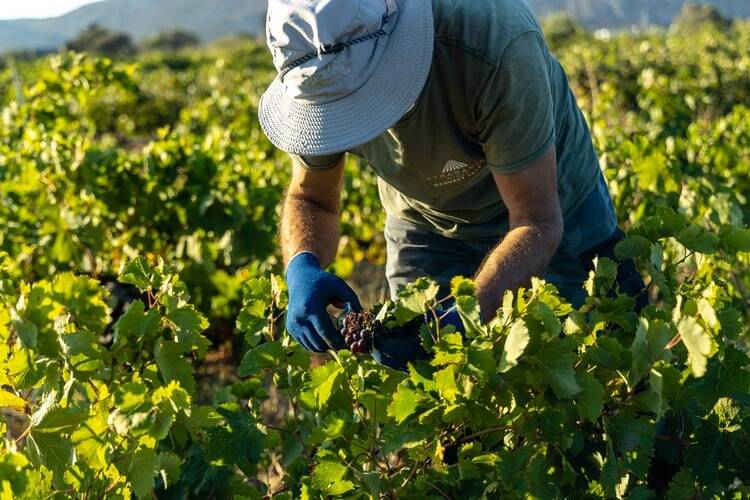Preparing an autumn full of wine
Get your personal wine cellar ready and take note of some suggestions to enjoy during the coming season.

To understand the scope and complexity of the harvest, it is important to know what are the most important variables that help make the final decision on which plots to harvest and when.
To begin with, winegrowers have different types of grapes whose ripening processes differ from one another. There are grapes that ripen earlier and others that ripen later. Similarly, there are warmer vineyards, prone to quicker ripening, either due to altitude, exposure or soil type, and others that are cooler and ripen later. All of these are important variables when deciding on the order of harvest and dates. The winery prepares a schedule of what will be the harvest by plots and grapes, although these dates may or may not be met depending on the weather conditions during the harvest.
There is an added complexity for wineries with larger vineyards. Harvesting 5 hectares is not the same as harvesting 100, in one case it can be more precise and quicker when harvesting and transferring the grapes to the winery, and in other cases this work is slower and more costly.
Whatever the type of winery, everyone is aware that a lot is at stake and therefore the level of tension is at its highest. In addition, the weather is unpredictable and during the harvest season, which in Spain runs from the end of July to the end of October, harsh weather conditions can ruin an entire harvest.

In the days leading up to the harvest, winegrowers have one eye on the vineyard and another on the sky. Some have sophisticated weather forecasting instruments to help them make the right moves in the days ahead. Others simply have the intuition and knowledge to predict with surprising accuracy when and where water will fall.
Generally, rainfall in the grape harvest is not very welcome. They tend to fatten the berry by subtly diluting its components, which is why we try to avoid, as much as possible, harvesting during and immediately after the rains. Water also brings with it the possibility of diseases appearing on the plant due to an excess of humidity. These diseases can reduce the quality of the harvest. That is why it is so common to hear that the grapes were harvested in perfect health, although this is not always true.
Stone or hail is the worst of the possible scenarios, its appearance will mean the breakage of bunches and berries, and with it the loss of production and money. This is undoubtedly the great spook of wine during the harvest and also a serious threat at other times of the year.
Although it is not the most common, there are other external factors that can also influence the decision to harvest earlier or later. Birds, rabbits or wild boars can be on the lookout for grapes rich in sugars, and some wineries try, in an early harvest, not to expose themselves too much to the losses that these animals can cause to the final production.

The date of harvest is undoubtedly the most important decision in the vineyard and is made according to several criteria. The central axis of any harvest decision is taken according to the ripeness of the grapes (sugar and probable alcohol content), acidity and polyphenol index. These variables are not an exact science; each winemaker seeks a different balance between them depending on the type of wine to be made from the grapes harvested. It is not the same to harvest white grapes for the production of a sparkling wine as for a barrel-fermented white wine. For the former, greater freshness, acidity and less body are desired compared to the latter, which is why one grape must be harvested before the other.
In this line, the winemaker must think about which grapes will go with each brand or style of wine and its moment of consumption. For those wines with a vocation for ageing, one should look for wines with a rich acidity that will sustain it over time and with a structure that will not be easily lost in this journey through time.
To conclude, each winery has a different idea of the optimum ripening moment. That is why it is so common to find overripe, ripe, fresh and green wines. It is not only a question of climate, but also a question of human assessment. It goes without saying that balance is the virtue. At Guía Peñín we see how crispness in a wine is a great virtue, but we also understand that there are different types of crispness. A Priorat style of freshness, where the soils are warm and the climate is Mediterranean, is not expected in the same way as in a wine from Rías Baixas, where it is necessary to know how to contain the wine's acidity.
At this time of year we invite you to travel to those wineries that open their doors to experience the wine harvest, which has been part of our culture as wine producers since the dawn of time and it is always good for the soul to be close to the countryside.
Get your personal wine cellar ready and take note of some suggestions to enjoy during the coming season.
Cava, whose identity revolves exclusively around wines with secondary fermentation in bottle, is still in the midst of a process of change in favour of zoning and segmentation
At Peñín we are already focusing on the 2025 Guide, which begins its tasting tour this January to reach October with the most complete Guide to Spanish wines in the world.